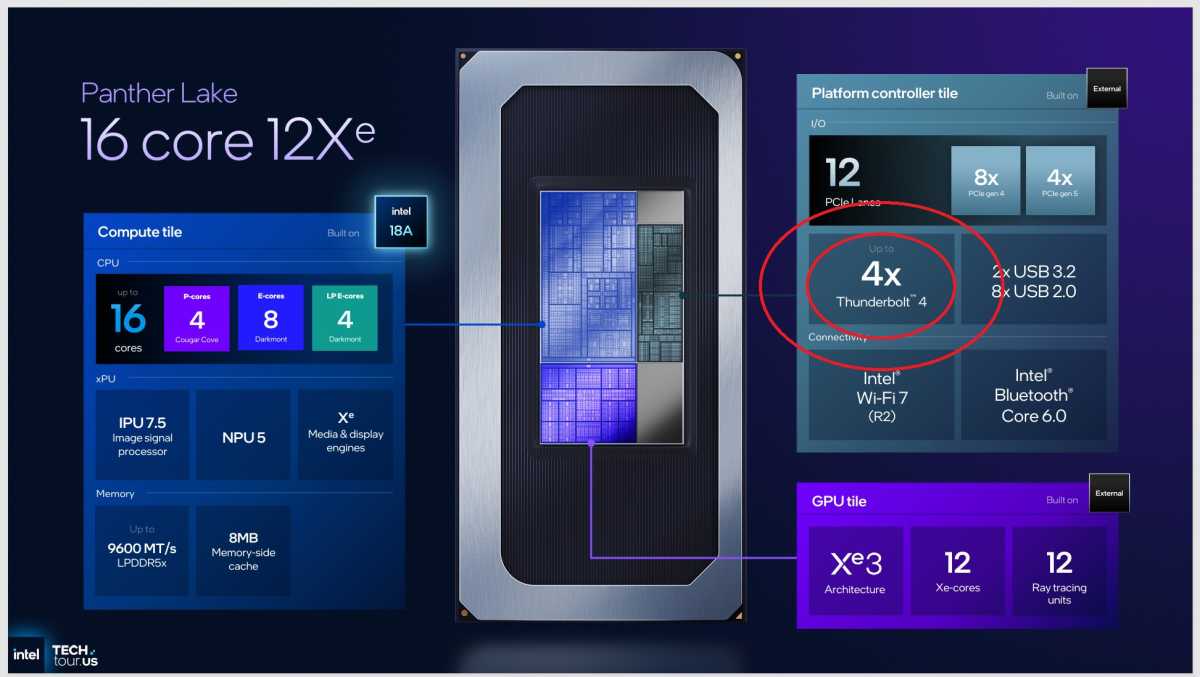If you’re in the market for a Thunderbolt docking station and you’re biding your time until Black Friday, know this: smart shoppers can save by buying a slightly older Thunderbolt 4 or USB4 dock instead.
Buying tech always comes with a choice, as prices of new technology climb higher. You can either buy the latest and greatest and insulate yourself from change for a few years or buy used and save a few bucks. For 2025 and 2026 docking stations, the latter choice appears to be the right one.
Docking stations have been in a transitional period for the last few years. Thunderbolt 3 / USB3 and Thunderbolt 4 / USB4 are almost identical in terms of their bandwidth, which is still one of the defining features of a docking station. In the real world, the 40Gbps bandwidth both standards offer are enough to connect 4K displays running 60Hz. Thunderbolt 5 was the next big thing, with 80Gbps (and in certain scenarios, 120Gbps) available for those 4K displays to run at 144Hz, which is good enough for gaming.
Here’s the key point that you need to know: Intel’s current laptop platform, the Core Ultra Series 2 (Lunar Lake) as well as Qualcomm’s Snapdragon X Elite chips, only support USB4 and Thunderbolt 4. (Thunderbolt 4 and USB4 are also functionally identical; in this case, Intel won’t certify a non-Intel chip as a “Thunderbolt” product, so USB4 is the generic equivalent.) And, somewhat shockingly, the next-generation of 2026 laptop platforms, the Intel Core Ultra Series 3 (Panther Lake) and the Qualcomm Snapdragon X2 Elite, don’t include integrated Thunderbolt 5 support, either.
No integrated Thunderbolt 5 chip support means very little Thunderbolt 5 laptop support, which means very little reason to buy a Thunderbolt 5 docking station. Sound familiar? It should. I was expecting Thunderbolt 5 to make a decent showing at CES 2025. Nope.

Intel
Intel does sell a discrete Thunderbolt 5 chip that costs extra, and because of this you’ll see Thunderbolt 5 ports appear on expensive gaming laptops like the Razer Blade 18. But they’re not really necessary. The Blade 18 includes a stellar 4K+ display that actually exceeds Thunderbolt 5’s capabilities (3840×2400, 240Hz). Why would you want to use an external display when the laptop’s built-in display is even better? Not all gaming laptops include the same quality of display, but the argument generally holds true: gaming laptops with Thunderbolt 5 ports generally offer superior hardware right now.
A Thunderbolt 5 dock isn’t cheap, either. Thunderbolt 5 docking station manufacturers tend to charge roughly $100 more for one. Plugable’s TBT-UDT3 Thunderbolt 5 dock is reasonably priced at $300 — it is! — but our top pick for the best Thunderbolt docking station, the Kensington Thunderbolt 4 Dual 4K Dock (SD5780T, is $185 at press time.
Yes, there are some things to consider. One, AMD hasn’t announced its next-gen laptop platform for 2026, and the 120Gbps version of USB (USB4 V2) could certainly make an appearance. Two, docks like the Sonnetech Echo 13, a Thunderbolt 5 dock with an integrated SSD, provide almost-but-not-quite internal-SSD speeds for external storage. An issue with any gaming PC is simply the available storage, and being able to connect an external SSD with gaming-capable speeds is an enormous plus. Thunderbolt 5 docks like Sonnet’s deliver. Three, Thunderbolt 5 supports external GPUs, and we might see a forthcoming notebook designed with a Thunderbolt 5 port to connect to an external GPU dock like the Razer Core X V2. Business during the day, gaming after hours: that’s part of the promise of Thunderbolt 5.
But times are not easy, and the ongoing economy and tariff wars mean people are going to want to save money during Black Friday and other holiday sales.
If you agree, don’t plan on spending big on a Thunderbolt 5 dock. PCWorld plans to monitor e-tailers for any ongoing sales of Thunderbolt and USB4 docks for laptops, and we’ll be prioritizing Thunderbolt 4 and its cost-effective competition, DisplayLink. You should, too.






